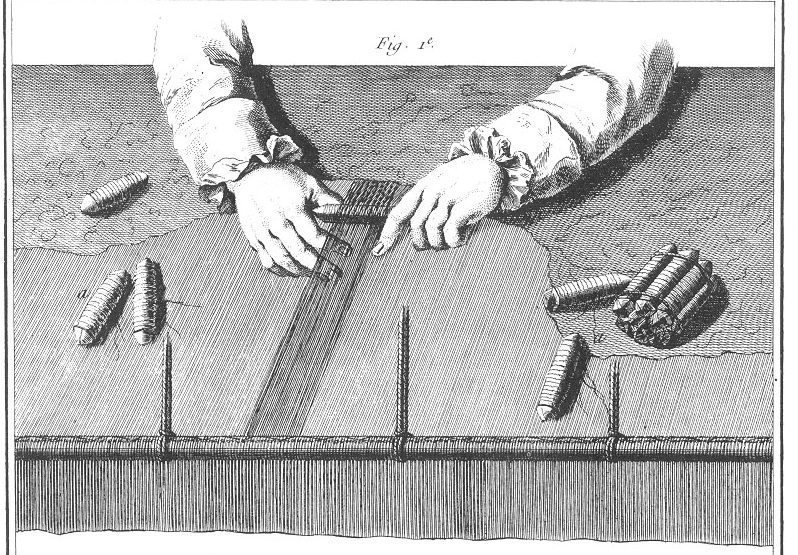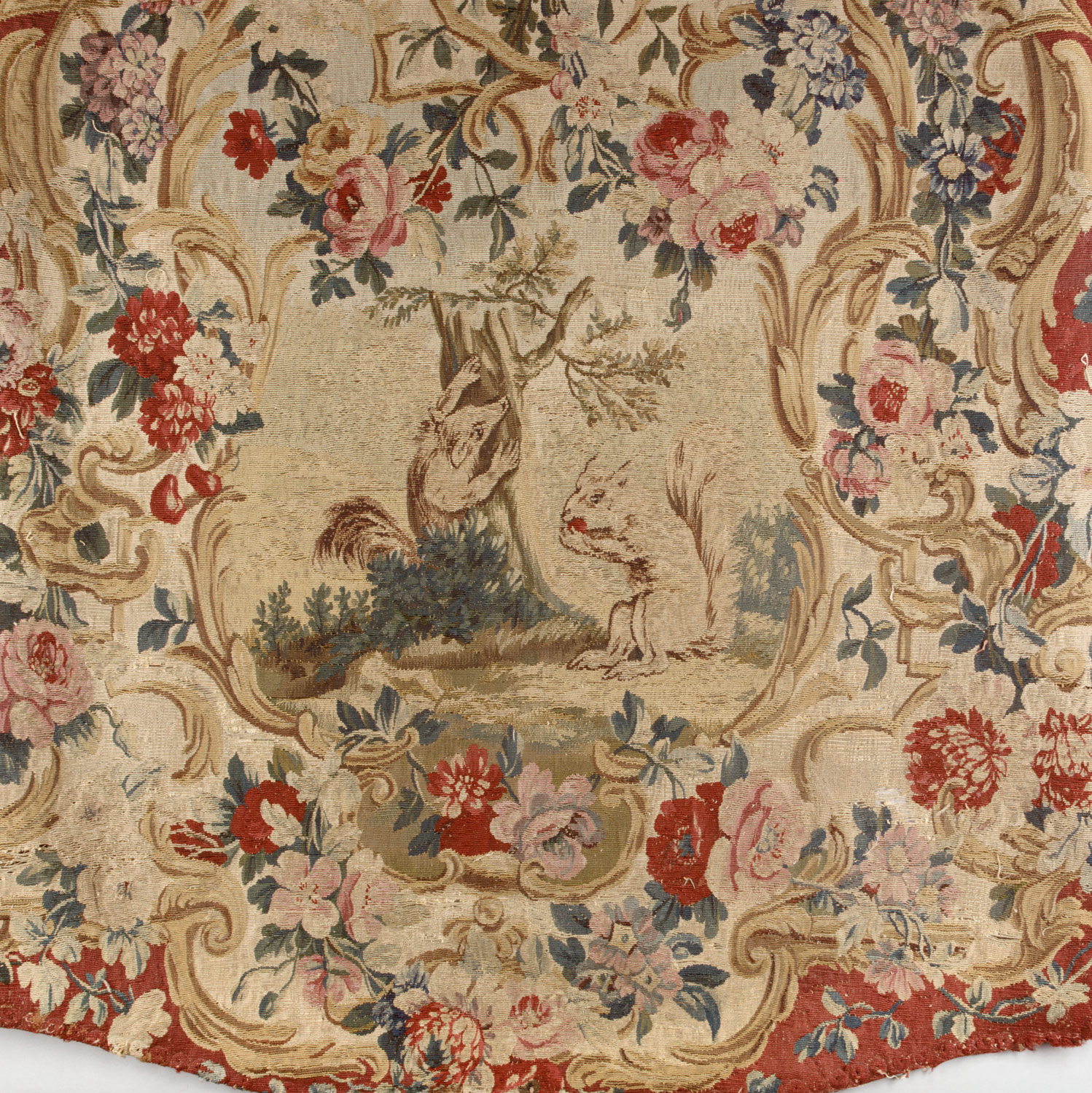As one of the most expensive and time-consuming crafts, tapestry only reached an astounding status in Europe during the 18th century, particularly at the hands of French. Upholstery became an increasingly successful way to change the look and feel of an entire room, by emitting both comfort and style in technique.[1]
In tapestry weaving, every stitch is woven by hand, thus enabling the creation of intricate figurative images in different scales. Enriched with silk thread, tapestries were an essential component of the ostentatious interiors put on display by powerful French monarchs to broadcast their wealth and power. Historically, tapestry was weft-faced weaving done by hand on a loom, where all the threads were hidden in the completed work.[2]

“Tapissier, plate 3, page 26:14:15,” from Encyclopédie, ou dictionnaire raisonné des sciences, des arts et des métiers, etc., eds. Denis Diderot and Jean le Rond D’Alembert. University of Chicago: ARTFL Encyclopédie Project (Spring 2011 Edition), Robert Morrissey (ed), http://encyclopedie.uchicago.edu/.
The detailed design on the chair was often copied from a full scale colored pattern, known as a cartoon. The weaver traced the pattern from the cartoon onto the bare warps. With a low-warp loom, as shown in the image above, the cartoon was folded or cut into strips and placed directly underneath the warp threads, at a close proximity to the weaver so he could create complex detailed designs.[3]
As Campbell notes, the quality of a tapestry depended on four main factors: “the quality of the cartoon from which it is copied: the skill of the weavers at translating the design into woven form; the fineness of the weave… and the quality of the materials from which it is made.”[4]

Detail of Armchair (fauteuil à la reine) showing upholstery. Photo: Metropolitan Museum of Art, New York (66.60.2).
The Beauvais tapestry workshop, where the fauteuil à la reine armchair was woven, produced successful work with designs produced by Jean-Baptiste Oudry. The designer was recognized for his characteristic French Rococo style tapestry, which included his idealized scenes of amorous courtiers and peasants in natural settings.[5] In the fauteuil à la reine armchair, the French Rococo style is apparent in the abundance of flowers and exotic creatures woven throughout the chair.
Return to: Making the Chair Next: Upholstery
[1] Campbell, Thomas P. “European Tapestry Production and Patronage, 1400–1600.” In Heilbrunn Timeline of Art History. New York: The Metropolitan Museum of Art, 2000–. http://www.metmuseum.org/toah/hd/taps/hd_taps.htm (October 2002)
[2] Campbell, Thomas P. “How Medieval and Renaissance Tapestries Were Made.” In Heilbrunn Timeline of Art History. New York: The Metropolitan Museum of Art, 2000–. http://www.metmuseum.org/toah/hd/tapm/hd_tapm.htm (February 2008)
[3] ibid.
[4] ibid.
[5] Campbell, Thomas P. “European Tapestry Production and Patronage, 1600–1800.” In Heilbrunn Timeline of Art History. New York: The Metropolitan Museum of Art, 2000–. http://www.metmuseum.org/toah/hd/tapb/hd_tapb.htm (October 2003)